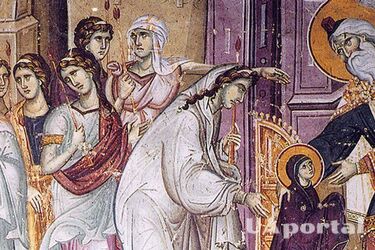Scientists reveal the identity of the painter Panselin - one of the most famous mysteries of European art

The mystery of the famous medieval painter and iconographer Manuel Pancelin, which has remained unsolved for centuries, may finally be solved. The Independent reports this with reference to a unique study.
Pancelin is considered a revolutionary in Orthodox religious art who brought humanity and depth to the strict canonical images. He is even called the "father of Western painting." However, very little has been known about the master's personal life until now. The Independent writes about it.
A group of researchers managed to put forward a sensational version: "Pancelin" may in fact be just a nickname that eventually replaced the real name of the outstanding artist. His works of the late 13th and early 14th centuries are considered to be the most significant in the period of the Byzantine Empire, a powerful state that stretched from Europe to Asia.
Art historians have long speculated that the name "Panselin," which translates to "full moon," could be a nominal designation for one of the artists of the Macedonian School of painting in Thessaloniki.
Recent research has linked Panselin to the Macedonian painter Ioannis Astrapas. Forensic handwriting expert Christina Sotirakoglou did a unique job: she compared the inscriptions in the manuscript, previously attributed to Astrapas, with symbols on a church painting in northern Greece.
Father Kosmas Simonopetritis, former administrator of Mount Athos, where the Protato Church with the iconographer's most famous works is located, confirmed the significance of this discovery. "Panselin was a real person, but his name is just a nickname by which Ioannis Astrapas became known," he said.
Professor of Byzantine art Konstantinos Vafiadis agreed with this theory, although he emphasized that several artists participated in the work on the paintings. "Some of the paintings definitely belong to Ioannis Astrapas, but there is still a lot of material left for further research," he said.
Additional information was obtained during the study of the Marcian Codex GR 516, a Greek handwritten text from the early 14th century. Among the illustrations was an image of the full moon, which further confirms the researchers' version.
Interestingly, the work on the study was complicated by the centuries-old ban for women to visit Mount Athos. Therefore, expert Christina Sotirakoglu had to study the materials only from photographs.
Father Kosmas emphasized the genius of Astrapas, who uniquely combined the traditions of the ancient world with the spirituality of Orthodox Byzantium.
The research is ongoing, but today we can say that we are close to solving the mystery of the outstanding medieval artist.
If you want to get the latest news about the war and events in Ukraine, subscribe to our Telegram channel!
